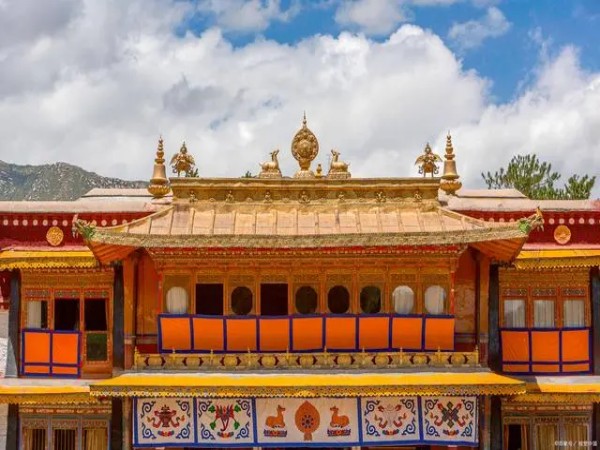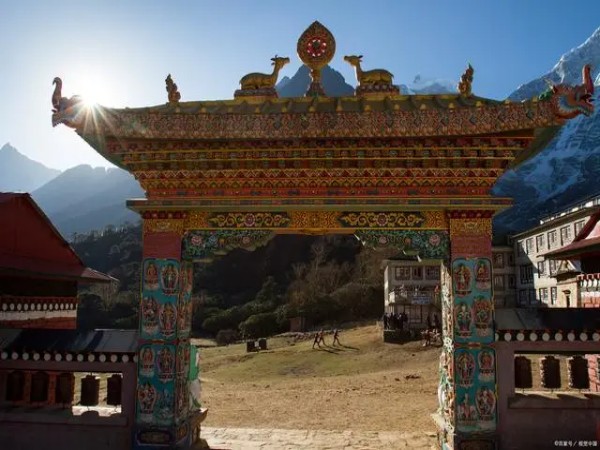Sakya Monastery
Sakya Monastery is located in Sakya County, 149 kilometers from Shigatse, Tibet Autonomous Region, China. Sakya has a division between the northern and southern monasteries, commonly known as Sakya Monastery refers to the southern one.

History of Sakya Monastery
In 1073, the founder of the Sakya sect, Konchog Gyalpo, built a white palace on a mountain north of the Zhongqu River, which later became known as the Ancient City Monastery due to its location near earthen hills. greyish, which in Tibetan is called "Sakya", from which the name Sakya comes. This is the current ruin of the North Sakya Monastery. In 1288, under the leadership of Buton Rinchen Drub, the South Sakya Monastery was built. Since then, descendants of the Khon family (rulers of the Sakya dynasty) have expanded the monastery to its current size.

Highlights of Sakya Monastery
The area of the monastery covers 14,700 square meters and is surrounded by a wall five meters high and about two meters thick, with a corner tower at each of the four corners. The main hall has an area of 5,700 square meters and has 40 large red columns that support the roof, the four central columns being especially thick. The largest of these columns has a diameter of 1.5 meters and is called "Jalnasé Qingana", which means "the column gifted by the emperor." Since the 11th century, many religious scholars have gathered here and written many notable works, leaving a rich cultural heritage for the nation. Historically, Sakya Monastery has made significant contributions to social unification and territorial consolidation.
The walls of the monastery are painted with three symbolic colors representing Manjushri, Avalokiteshvara and Vajrapani, which is why the Sakya sect is also known as "the teaching of flowers". Thanks to the efforts of Buton Rinchen Drub, in the time of the Yuan dynasty, Tibet was officially integrated into the territory of the motherland, becoming part of China. To honor Buton's merits, Prince Kublai Khan granted him control of the Tibet region. During the Buton period, the Sakya sect was further strengthened by the respect of Emperor Yuan Kublai Khan and established the Sakya dynasty with Sakya as its base, becoming the political, economic, cultural and religious center of the entire Tibetan area at that time.

Sakya Monastery houses an extensive collection of classical texts, the stacks of which are stacked like walls, and a large number of books and artifacts, like a historical museum. It is estimated that there are more than 40,000 volumes of scriptures throughout the monastery, and on the back wall of the Tsokchen Hall alone, there are 464 wooden shelves containing tens of thousands of scripture scrolls. Among these texts, there is a rare "Kangyur" titled "Buddha Dragon Horse", which measures 1.8 meters long, 1.03 meters wide and 0.67 meters thick. This monumental work addresses a wide range of topics, including religion, history, philosophy, literature, and animal husbandry in Tibet.
The monastery also houses one of China's greatest cultural relics, the Kangyur. The Kangyur is a collection of Buddhist scriptures written in Sanskrit on palm leaves, each containing four colored Buddhist images. Originally, there were over 100 volumes, each containing one to two hundred leaves, but only 21 volumes survive, making them a priceless treasure.
The "Buddha Dragon Horse" Kangyur has special significance for research on Tibetan history, archaeology, religion, ethnicity, origin of writings and history of literature and art.

The monastery also preserves a number of gifts given by previous emperors to the Sakya lamas, such as porcelain vases, jade bowls, golden Buddha statues, armor, swords, religious instruments, horns, imperial robes, royal boots, crowns, seals and even silk fabrics. These gifts recall the close relationship between the local Sakya government and the Yuan dynasty more than 600 years ago.
While not visiting the Potala Palace means not having really been to Tibet, not knowing the Sakya Monastery means not having truly understood the history of Tibet.







